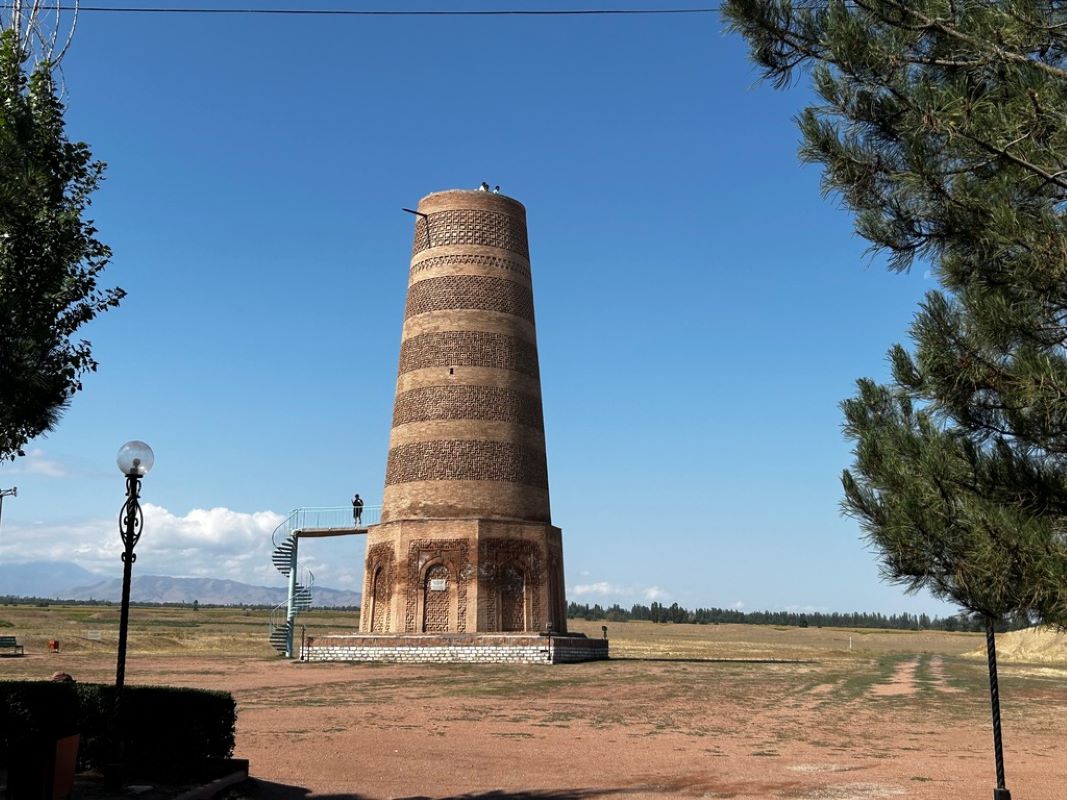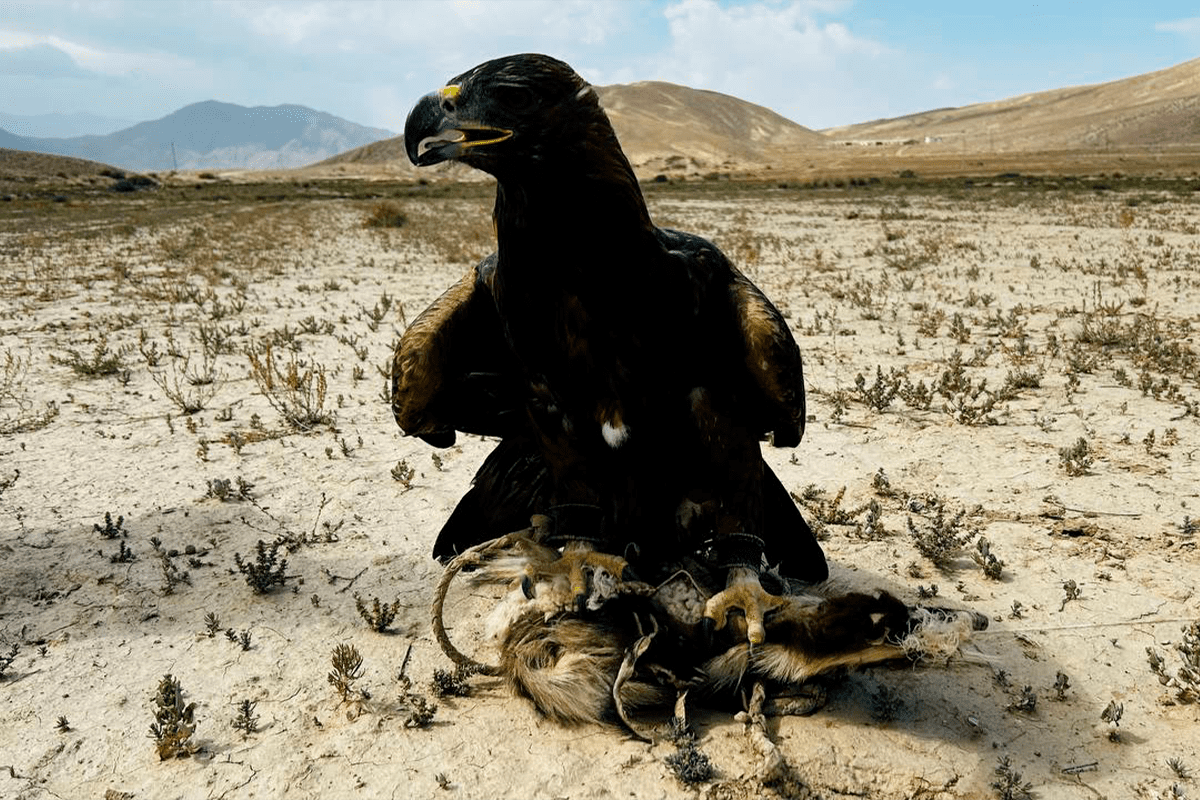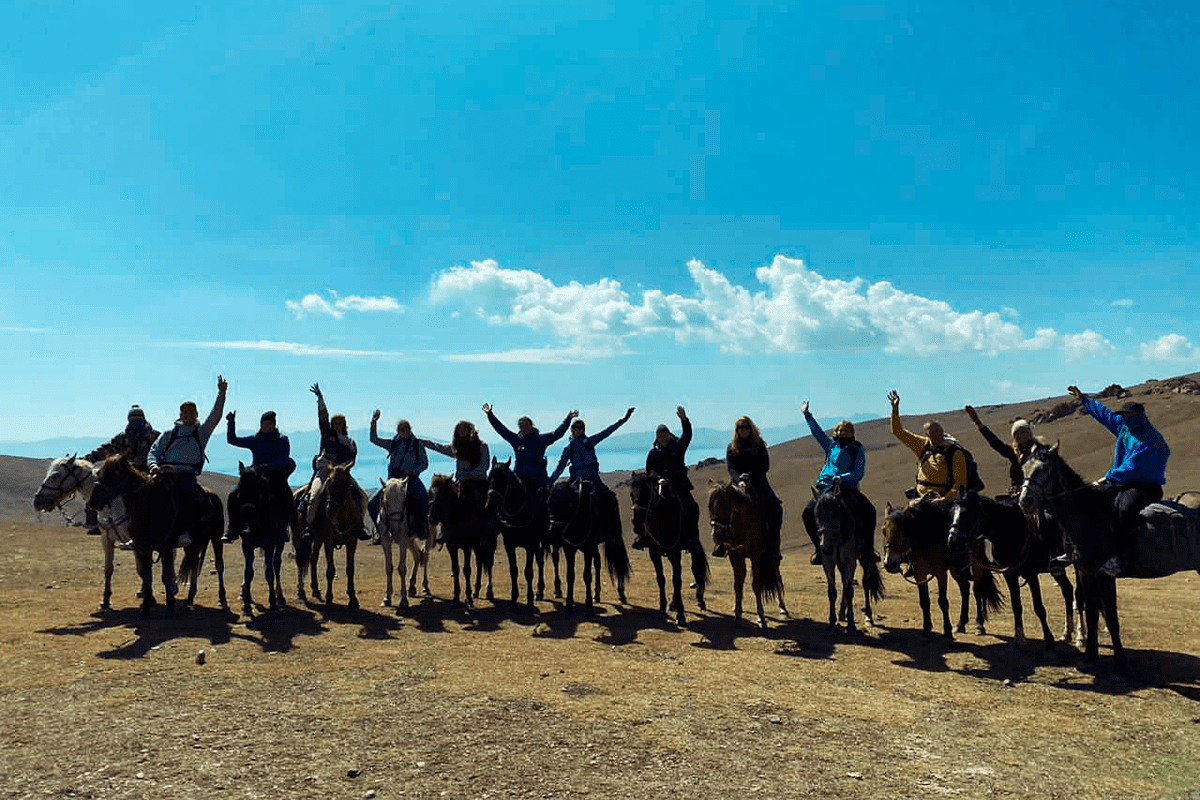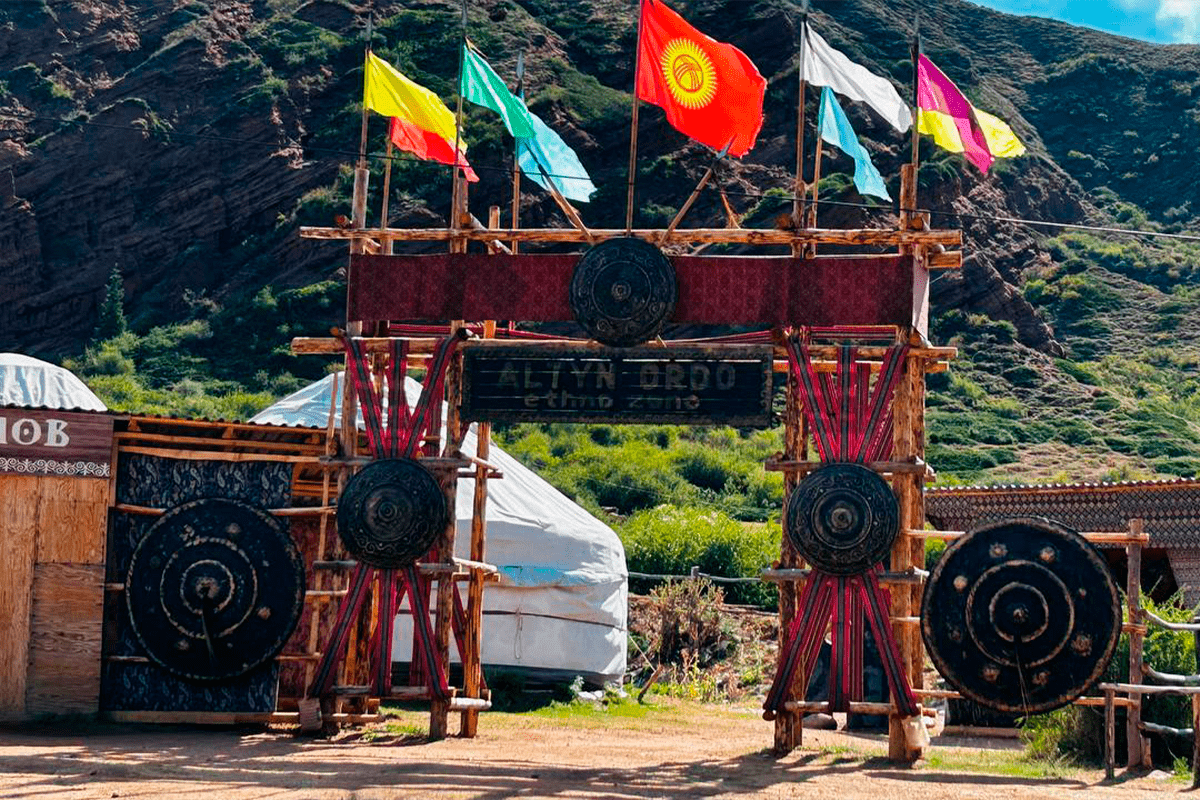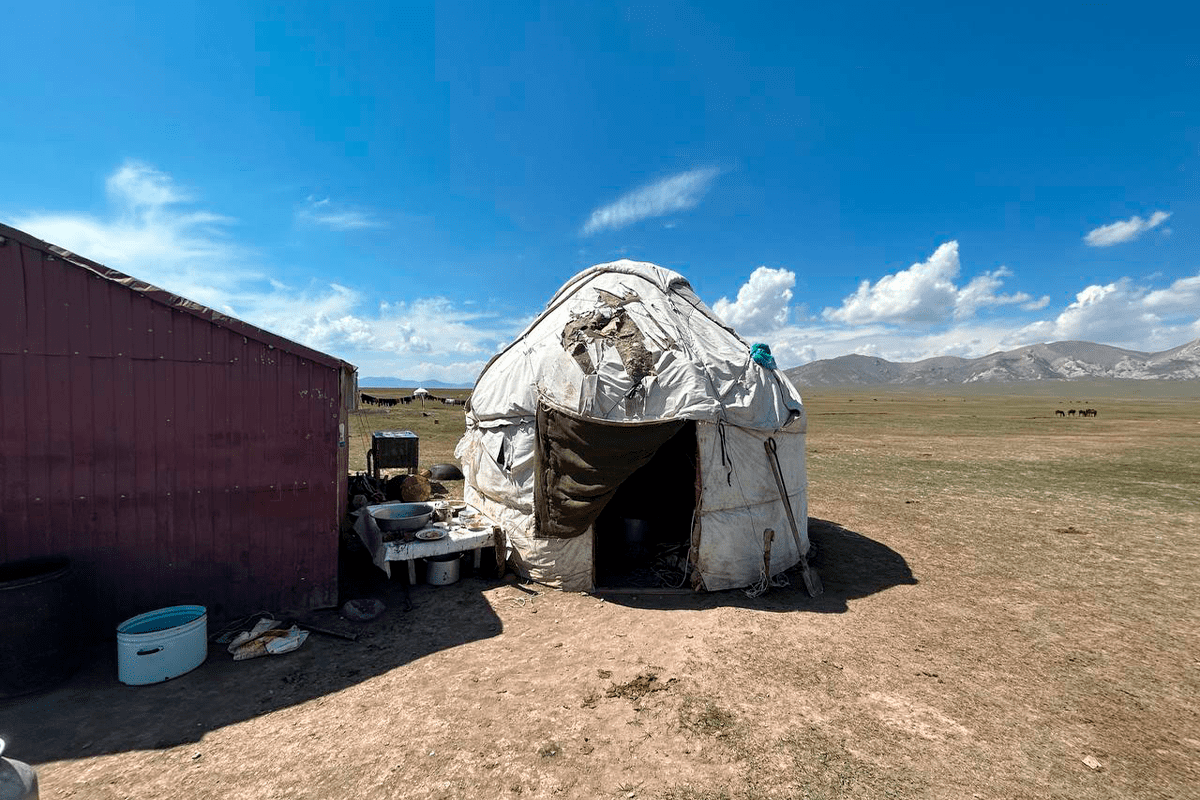Burana Tower is a minaret of the Karakhanid dynasty in the Chui Valley in northern Kyrgyzstan. It is located 80 km from the capital Bishkek, 12 km southwest of the city of Tokmak towards the Keget Gorge in the Kyrgyz Mountains, on the left bank of the Chui River. The tower is part of the specially protected archaeological and architectural complex “Burana Tower”, which is part of the Kyrgyz Archaeological and Architectural Museum and is protected by the state as an object of cultural and historical heritage. It is one of the oldest burnt brick minarets in Central Asia.
History
The spiral staircase inside the tower dates from the X-XI century. It is made of burnt brick and juniper wood. It rests on an octagonal stone plinth, round in cross-section and tapering to the top of the trunk, covered with an ornamental masonry strip. On the south side, at a height of 5 m, there is a doorway from which a spiral staircase leading to the observation deck begins. The height of the tower is 21 m, the diameter is 9 m. It is believed that once its height was 44-48 m. However, during the earthquake, the upper part fell. Currently, the height of the tower is 21.7 m .
Next to the tower there is a “Rock Garden” – a collection of so-called “balbals (VI-X centuries) ancient tombstones, ancient millstones and stones with rock paintings (1000 BC).
Probably, Burana was the vertical power of the ancient city of Balasagun, which was the northern capital of the Turkic-speaking Karakhanid state; in 1218, Balasagun was captured and destroyed by the Tatar-Mongols and disappeared in the XIV century; then it was captured and destroyed by the Tatar-Mongols in the XIII century.
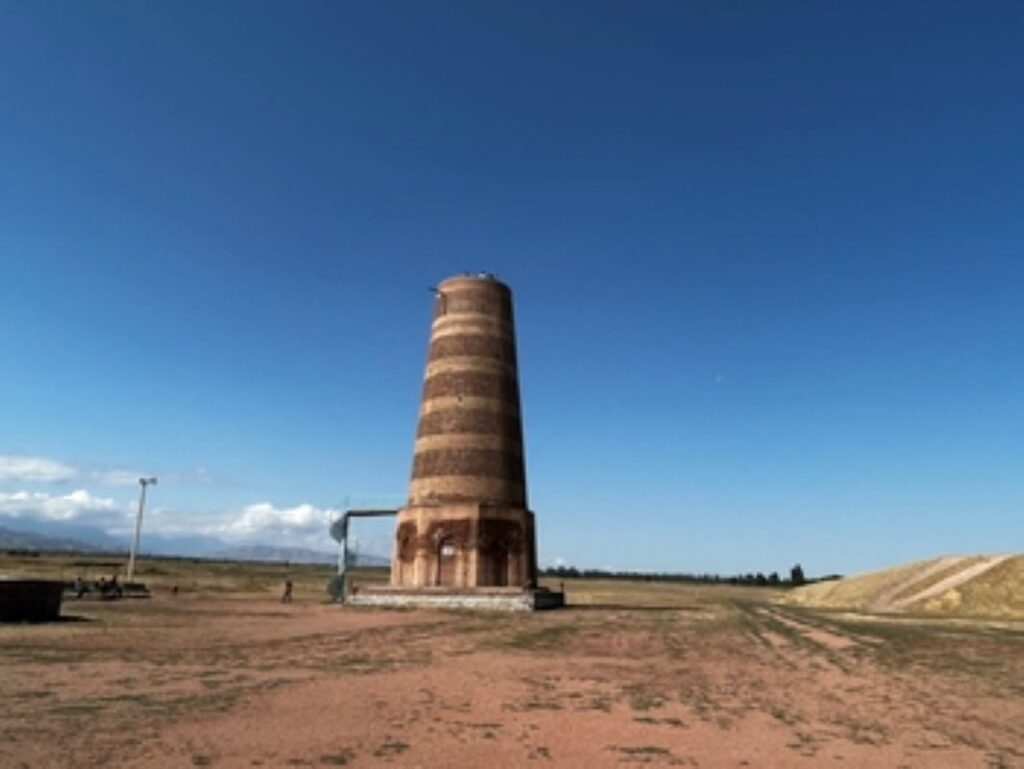
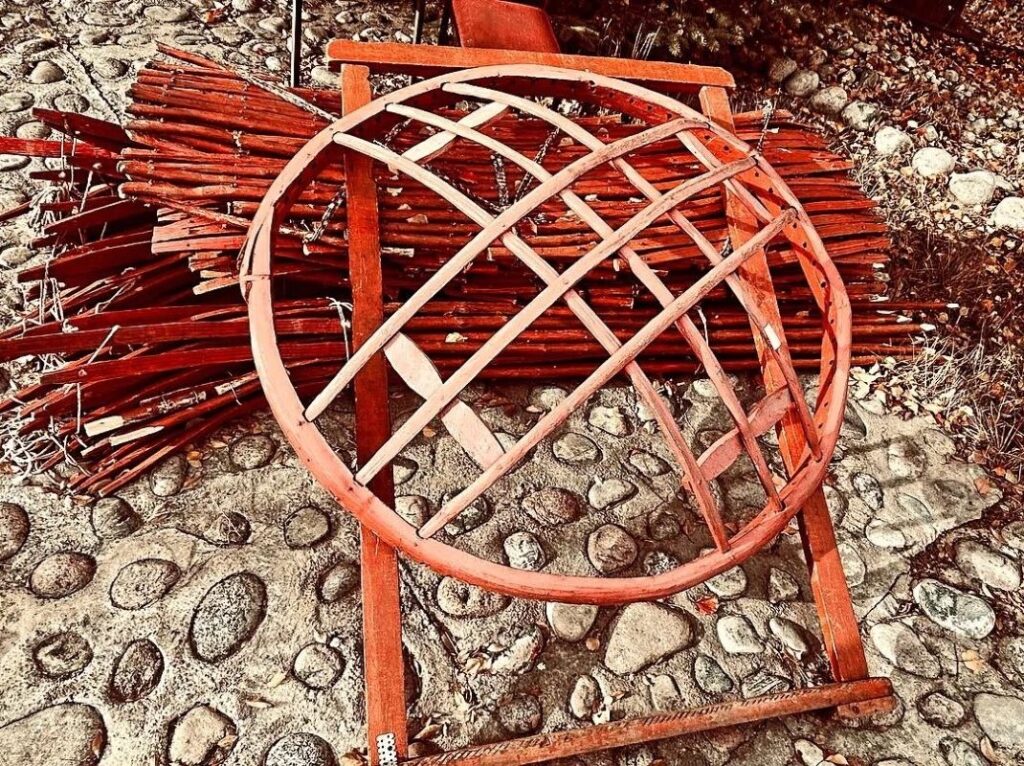
Researches
Buraninskoye settlement and minaret have been the subject of research by Russian scientists and local historians since the middle of the XIX century. A significant contribution to the research was made by F.V. Poyarkov, V.D. Gorodetsky, A.M. Fetisov, N.N. Pantusov, V.P. Rovnyagin, V.V. Bartold and other local historians. made a significant contribution to the study. Despite the importance of archaeological research on the territory of pre-revolutionary Kyrgyzstan, they were of an amateur, casual nature. No measures have been taken to protect archaeological sites.
Already at the beginning of Soviet power, a number of measures were taken to preserve the Burana tower and archaeological study of the settlement: in 1927-1928, by decision of the government of the Kyrgyz ASSR, the minaret was restored and preserved, preventing further destruction; in 1927, M.E. Masson, and in 1929, A.I. Telenozhkin conducted an archaeological survey of the settlement, which included excavations, collection material and preparation of survey plans.
Based on the obtained material, the archaeologist M.E. Masson established that the Burana tower was built in the first half of the XI century. Subsequently, this date was accepted by the majority of researchers, and in the 1930s, the Scientific Committee of the Kyrgyz SSR and the general public showed great interest in the Burana settlement. Publications about the monument appear in periodicals. Burana Tower is visited by many tourist excursions and is under the constant control of local authorities.
Individual Nomads life tours are a great opportunity to make a route according to your wishes. We offer a wide range of walking, cycling, equestrian, automobile, ethno-tours and, of course, tours combining two or more types of sightseeing activities.

